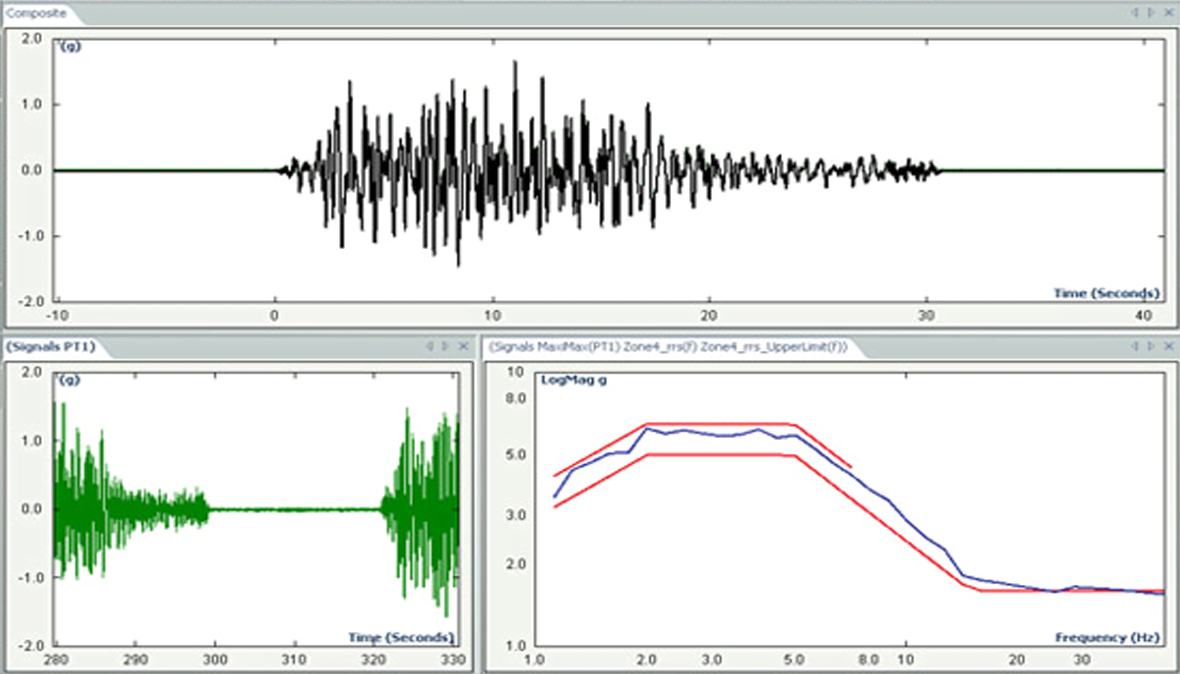Vibration Control Software
Transient Time History
A vibration controller software feature that replicates an imported transient pulse to excite a shaker system for the purpose of studying a structure’s dynamic response.
Demande de devisTransient time history (TTH) allows the user to simulate real-world shock transients based upon actual field measurements.
Transients are short-lived vibration events characterized by waveforms that start with relatively high amplitudes that quickly dampen out. Compensation can be applied to ensure the generated waveform is compatible with the target shaker system.
USE SCENARIOS
- Replication of field-measured shock pulses on a laboratory shaker system
- Shock simulation, including drop shock, pyrotechnic transients and other high-frequency shocks
- Testing effects of transporting goods, such as road bumps
- Automotive testing, such as door slamming and airbag actuation
- Military applications, including gunfire and pilot ejection
- Replication of seismic transients, such as earthquakes that include Bellcore waveforms
CHARACTERISTICS
In TTH, transient vibration events recorded in the field can be imported and processed to produce a waveform that is suitable to drive a shaker system. A variety of file formats is usually supported, including ASCII text, Excel® CSV (comma-separated values), Universal File Format (UFF) ASCII and binary.
The replicated waveform can be digitally resampled in terms of the samples per second and frame size. Profile compensation and editing tools, such as DC-offset removal and high-pass filters, are available to optimize the waveform and adjust it to a shaker system’s specification.
The end points can be tapered by applying a Hann window over a specified percentage of the leading and trailing parts of the waveform. Compensation can also be applied to ensure initial and final conditions of zero acceleration, velocity and displacement.
TTH includes all of the automatic and manual test controls that come with the classical shock feature. Any of the input channels can usually be displayed in terms of acceleration, velocity or displacement waveforms, either during testing or in post-test analysis.
In addition to importing, the signal can be generated from a library of pre-stored profiles for sine, chirp, burst sine and Bellcore Z1, Z2, Z3 and Z4.

